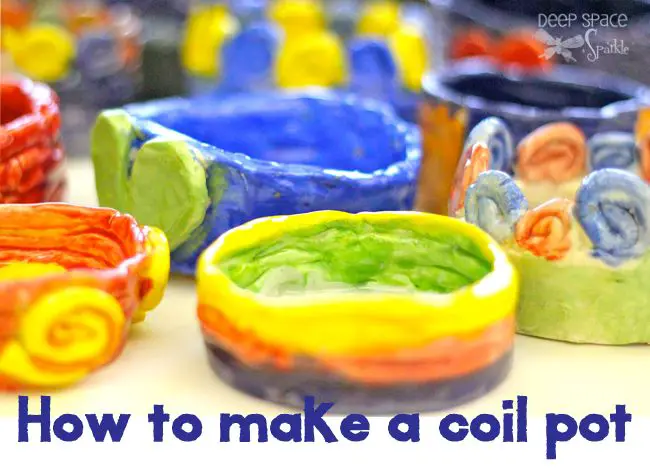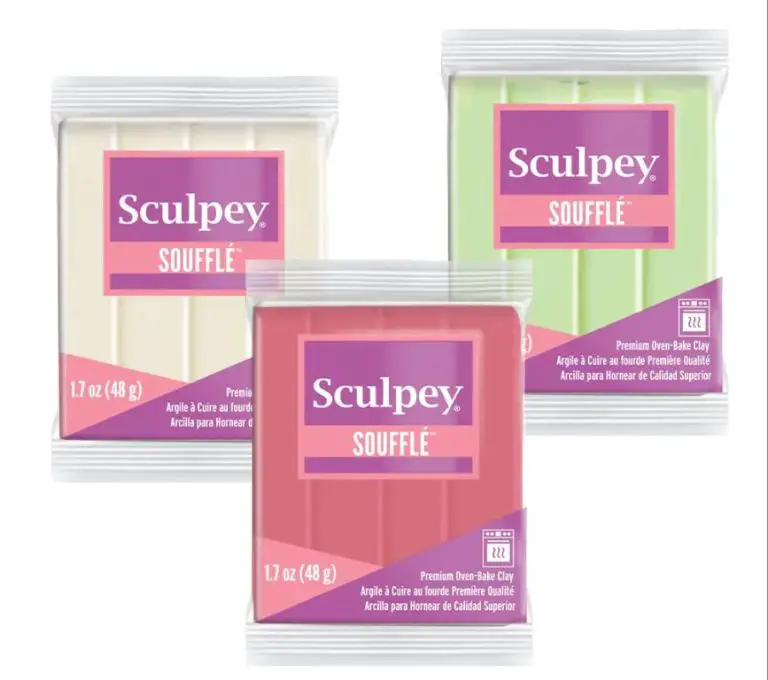What Is Traditional Coil Pottery?
Coil pottery is a handbuilding technique that has been used for thousands of years across many cultures to create ceramic vessels and sculptures. The method involves rolling out ropes or coils of clay and stacking them on top of one another to build up the form.
Evidence of coil-built pottery dates back over 20,000 years to the paleolithic era. In the ancient Americas, Indigenous peoples used coil techniques extensively, with notable traditions emerging in the Ancestral Puebloan and Mimbres cultures of the Southwest starting around 200 BCE (Source). Beautifully painted Mimbres bowls and elaborate Ancestral Puebloan jars showcase the artistic heights coil pottery reached.
Coil pottery holds cultural significance for many groups as a conduit for passing down traditions and artistic techniques from generation to generation. The labor-intensive process reconnects modern potters with past practices and ways of life. Coiled vessels also allow for greater freedom of form compared to wheel-throwing, making coil building ideal for sculptural works.
Making Coil Pots
Coil pots are made by rolling out ropes or coils of clay and stacking them on top of each other to build up the vessel walls. Making a coil pot requires only a few materials and some basic techniques.
For materials, you’ll need clay, a work surface, clay tools, and water. The type of clay is up to you, but stoneware or earthenware clays are common choices for coil pots. Prepare the clay by wedging it until it’s soft and free of air bubbles. The work surface can be any flat, smooth surface like a table, canvas, or board.
To start, shape the base by pinching up a ball of clay into a rounded shape. Then flatten the bottom so it sits evenly. You can leave the base rough or smooth it out further.
Next, begin rolling out clay coils that are approximately 1/4″ thick by pressing a slab through a guide or using your hands. Make the coils uniform in size. Attach the first coil around the base’s edge by scratching into the clay on both surfaces and smoothing over the seam. Use the scoring method to join each additional coil onto the previous one, going up in a spiral.
As you build the walls higher, support them with one hand on the inside. Try to maintain an even thickness throughout. Leave the rim unfinished at this stage. Once you reach the desired height, let the pot firm up slightly before smoothing the coils.
Use a rubber rib, wooden tool, or just your fingers to gently blend the coils together and flatten any lumps or seams. Don’t overwork the clay or make it too thin. Softly smooth the interior as well. Let the pot dry completely before handling further (Source).
Firing Coil Pots
Firing is an essential stage in the coiling pottery process, as it hardens the clay and prepares it for glazing and final decoration. There are two major firing stages – the bisque firing and the final glaze firing.
Bisque firing is done after the pot has been shaped, dried slowly, and allowed to harden to leather-hard consistency. Bisque firing takes place at a lower temperature, usually around 1000-1100°F (538-593°C), with the goal of hardening and stabilizing the clay body before glazing. During bisque firing, any moisture is driven out of the clay slowly to prevent cracking. Ramps are gradual, often taking 8-12 hours to complete the bisque cycle. Pieces may be fired on shelves or placed loose inside saggars.
After bisque firing, the pottery is ready for glazing. Glazes are glass-like coatings applied to the bisque that melt and form a decorative, waterproof surface during the final firing. Glazes may be high or low temperature, colored, clear, glossy, or matte. They are applied by brushing, dipping, or pouring and allowed to dry before final firing.

The final firing, or glaze firing, takes place at a higher temperature – around 2100-2300°F (1150-1260°C) for stoneware clays. This melts the glazes to a smooth, glassy finish. As with bisque firing, gradual ramps over 8-16 hours are common to prevent glaze flaws like pinholes, cracking, or crazing. The kiln is cooled slowly over another 1-2 days before unloading finished ware.
Proper firing is crucial for coil pots to become functional ware. With careful control of temperatures and ramp times, coil potters can achieve stunning glaze effects on robust, vitrified clay bodies.
Decorating Coil Pots
Once the coil pots have been fired, potters often decorate them to add visual interest and personalize their creations. There are several common techniques for decorating coil pots:
Incising designs – Using sharp tools, potters can carve intricate patterns and designs directly into the surface of the fired clay. Geometric shapes, animals, leaves, and other motifs are commonly incised (Roose Primary School).
Adding appliques – Clay shapes, coils, and other ornamental pieces can be applied onto the surface of the pot before firing for a three-dimensional effect. Appliques may match or contrast with the underlying clay.
Painting – Fired coil pots may be painted with natural earth tone paints, using clay pigments mixed with water or binders. Common colors include ochre reds, browns, blacks, and whites. Paints can be used to coat the entire surface or create patterns (Instructables).
Decorating allows coil potters to add personal expression and make each finished piece unique. The combinations of incising, applique, and painting are endless.
Notable Coil Pottery Styles
Coil pottery has had a long history in the American Southwest, with notable styles emerging from various Native American groups in the region.
The Anasazi people, ancestors of the modern Pueblo tribes, were prolific coil pottery makers starting around 300 BCE. They created simple, functional vessels, often painted in black and white geometric designs. Prominent Anasazi styles include Black Mesa Black-on-white and Sosi Black-on-white pottery. These pieces featured polished exteriors and bold painted designs The History of Coil Pottery in the Southwest United States.
The Mimbres people, located in southwestern New Mexico, developed a unique figural style of coil pottery from 1000-1150 CE. Their pots featured stylized animals, humans, and mythological creatures painted in black against a white background. Intricate geometric patterns often framed these central figures. Mimbres pottery reflects a high level of craftsmanship and artistic expression History of Coil Pots: The Long and Winding Road.
Santa Clara Pueblo, north of Santa Fe, has been renowned for its black-on-red coil pottery since the late 1800s. Thin-walled vessels are painted with geometric and floral motifs. The polished red slip and bold matte black designs exemplify the classic Santa Clara aesthetic. Famous potters like Margaret Tafoya made it one of the most collectible Pueblo pottery types.
Contemporary Coil Potters
Coil pottery remains popular among contemporary ceramic artists who appreciate the handmade, organic nature of this technique. Here are some of the most notable modern coil potters:
Gordon Baldwin is an influential British potter known for his large, oval-shaped coil pots decorated with abstract designs. Baldwin builds up his pots with long coiled strips of clay and creates flowing, brushed surfaces inspired by Chinese calligraphy. His work demonstrates the sculptural possibilities of coil building (Source).
Elizabeth Fritsch is another leading British ceramicist recognized for her handbuilt vessels and vessels. She expertly constructs pots, jars, and bowls using the coiling technique and decorates them with carved, incised, and pressed patterns. Fritsch’s pieces often have an architectural, constructed look (Source).
Louise Goodman is an American potter who makes figurative coiled sculptures of women. Goodman coils long strips of clay to form the body, then adds detailed facial features and textures to create her signature organic, feminine figures. Her work explores themes of womanhood and relationships.
Overall, contemporary coil potters value the handcrafted look of coil-built ceramics and utilize the technique in innovative ways, pushing the boundaries of traditional coil pottery.
Coil Pottery in Culture
Coil pots have played an important role in rituals, ceremonies, and daily life for many cultures around the world. In the American Southwest, Pueblo peoples used coil pots extensively for utilitarian purposes as well as sacred ceremonies.
According to https://study.com/academy/lesson/coil-pot-lesson-plan-for-high-school.html, Pueblo potters perfected the coil technique and created not only cooking pots and storage jars, but also ceremonial vessels used in religious rituals. Coil pots were seen as having spiritual significance.
In West Africa, coil pots have been a long-standing tradition, used for storing and carrying water as well as food preparation. They are often decorated with symbolic designs. As noted in https://quizlet.com/353067801/ceramics-final-study-guide-flash-cards/, African coil pots play an important role in festivals and masquerades.
While coil pots were originally created for functionality and cultural ceremonies, today they are also viewed as works of art. Contemporary coil potters around the world bring innovation to this ancient technique, creating one-of-a-kind pieces that are displayed in museums and galleries.
Challenges of Coil Pottery
Coil pottery can present some unique challenges compared to other handbuilding techniques. Two of the main difficulties faced by coil potters are joining the coils together smoothly and preventing the finished piece from cracking during drying or firing.
Properly joining coils requires patience and practice. The coils must be welded together without leaving gaps or cracks. This is achieved by smoothing the seam between coils with your fingers, a wooden modeling tool, or a spray bottle. Rushing this crucial step can lead to weak joins that fall apart (Coil Basics).
Cracking occurs when moisture escapes too quickly from the clay. Coils can be prone to cracking because they tend to be thicker than slabs or wheel-thrown vessels. Preventing cracks requires carefully controlling the drying process. Potters often cover coil pieces with plastic after joining coils to slow moisture loss. Bisque firing before glazing is also important to remove water before the glaze fire (Ancient Pottery Challenge).
Advantages of Coil Method
The coil method has several advantages that make it a popular technique among potters. Two of the main benefits are the ability to create thicker walls and easier control over the final shape.
Coiling enables potters to build thicker walls compared to other handbuilding techniques like slabs or pinch pots. By stacking and blending coil upon coil, vessels can be made with sturdy, thick walls that are less prone to cracking or buckling when fired. Thicker walls also provide better insulation if creating functional pots for food and drink.
The gradual coil building process also allows for superior control over the final form. Potters can gently shape coils to create smooth, rounded profiles or geometric angles as desired. Unlike wheelthrowing where the clay spins rapidly, coils are maneuvered by hand at a comfortable pace. This hands-on approach provides a high degree of control and flexibility to create precise shapes.
Sources:
Functional Coil Pottery: Creating Practical and Aesthetic Kitchenware
Conclusion
Coil pottery has a rich history and legacy spanning thousands of years across many cultures. This method of handbuilding pots by rolling out and stacking coils of clay is one of the oldest and most fundamental techniques in ceramics. We’ve explored the basics of constructing, firing, and decorating coil pots, along with notable styles and contemporary artists working in the tradition.
While other techniques have grown in popularity, coil building remains an important foundation of pottery that connects us to ancient craftspeople and traditions. The meditative process of slowly building up form through repetitive coils of clay teaches patience and care. Contemporary coil potters blend the old and new by bringing fresh perspectives to this ancient method.
Coil-built ceramics will continue evolving with the hands of each new generation of makers, carrying forward wisdom passed down through centuries while finding new directions. Whether honoring cultural heritage or experimenting with form, coil pottery persists as a beloved practice that transcends time.





